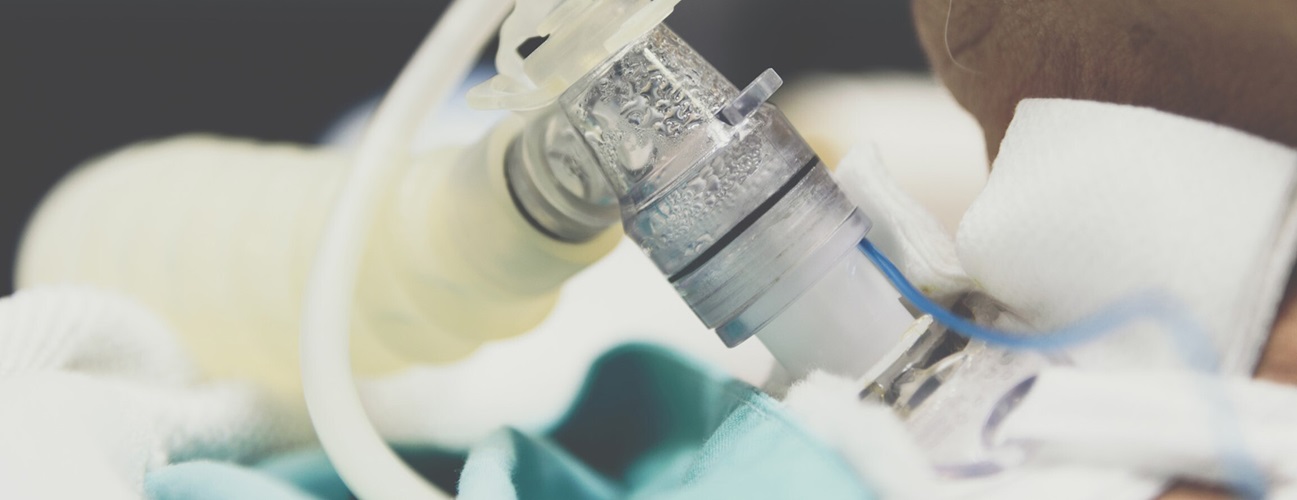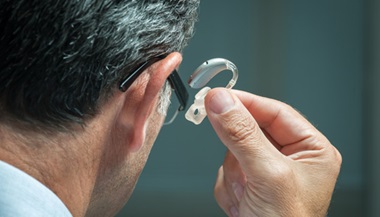Tracheostomy
Featured Expert:
What You Need to Know
- A tracheostomy may be performed on a person with a problem that prevents air and oxygen from reaching the lungs. It involves making a surgical opening into the trachea through the neck and inserting a tube through which the person breathes.
- The procedure may be performed on an emergency basis if a person has a sudden airway problem, or as an elective procedure if a chronic health condition is making it difficult for a person to breathe normally.
- A tracheostomy may be temporary or permanent and may use different types of tubes depending on the individual situation.
What is a tracheostomy?
A tracheostomy (also called a tracheotomy) is an opening surgically created through the neck into the trachea (windpipe) to allow air to fill the lungs. After creating the tracheostomy opening in the neck, surgeons insert a tube through it to provide an airway and to remove secretions from the lungs. The person with a tracheotomy breathes through the tracheostomy tube (trach tube) rather than through the nose and mouth. A tracheostomy may be temporary or permanent.
Tracheostomy vs Tracheotomy
The term “tracheotomy” refers to the procedure to make an incision (cut) into the trachea (windpipe). The temporary or permanent opening itself is called a “tracheostomy.” However, the terms are sometimes used interchangeably.
Who might need a tracheotomy?
All tracheotomies are performed to address a lack of air getting to the lungs. An emergency tracheotomy may be performed on a person with acute illness or traumatic injury that blocks their airway.
A person with chronic illness, such as a condition that blocks the airway or paralyzes the breathing muscles, may have a tracheotomy as an elective procedure. A trach tube can make it easier to breathe. For some people on mechanical ventilation or who are receiving intensive care, a tracheotomy may be easier to tolerate and require less sedating medication than having an endotracheal tube placed down the throat.
The three most common reasons why a tracheotomy is performed are:
- Prolonged dependence on a ventilator for breathing
- To bypass an obstructed upper airway
- To clean and remove secretions from the airway
- To deliver oxygen to the lungs more easily or safely
Babies and children may have conditions that require a tracheostomy. Learn more about pediatric tracheostomy .
Airway Problems That May Require a Tracheostomy
Many health conditions and injuries can result in insufficient air getting into the lungs. Some of these include:
- Tumors, such as cystic hygroma, a benign tumor that may form on a newborn’s neck
- Infection, such as epiglottitis or croup
- Subglottic stenosis, a narrowing of the airway below the vocal cords and above the trachea
- Subglottic web
- Tracheomalacia
- Vocal cord paralysis
- Laryngeal injury or spasms
- Congenital (inborn) abnormalities of the airway
- Large tongue or small jaw that blocks airway
- Treacher Collins and Pierre Robin syndromes
- Severe neck or mouth injuries
- Airway burns from inhalation of corrosive material, smoke or steam
- Obstructive sleep apnea
- Foreign body obstruction
Lung Problems That May Require a Tracheostomy
- Need for prolonged respiratory support, such as bronchopulmonary dysplasia (BPD)
- Chronic pulmonary disease
- Chest wall injury
- Diaphragm dysfunction
Other Reasons for a Tracheostomy
- Neuromuscular diseases that paralyze or weaken breathing muscles
- Aspiration (inhaling food or liquid) related to muscle or sensory problems in the throat
- Fracture of cervical (neck) vertebrae with spinal cord injury
- Long-term unconsciousness or coma
- Disorders of respiratory control such as congenital central hypoventilation or central apnea
- Facial surgery and facial burns
- Anaphylaxis (severe allergic reaction)
Decannulation
Decannulation ― removing a trach tube ― may be considered when you are conscious and alert and show signs of adequate airflow to the lungs, such as:
- Not needing a ventilator
- Decreased secretions
- A strong cough
- Minimal respiratory difficulty
Decannulation can be done without a surgical procedure but must take place in a doctor’s office. You lie down, face up, and the nurse or doctor removes the tube and covers the opening with a dressing to keep air out. You will be instructed to cover the opening with your finger when you talk or cough.
You may experience a temporary sensation of shortness of breath as you adjust to breathing through your mouth and nose. The practitioners will be prepared to help you if removal of the tube causes difficulty breathing.
Once the tube is removed, a doctor or nurse will bandage the area. The tracheostomy will usually close on its own over about two weeks, leaving a small scar at the base of your neck. If the opening does not heal on its own, you may undergo a minor procedure to have it closed.
Preparing for Elective Tracheotomy
- Once you and your surgeon have decided a tracheostomy is right for you, the surgeon will examine you and determine if you are a good candidate for the surgery. The surgeon will assess the range of motion of your neck.
- A tracheotomy team, including the surgeons and anesthesiologists, will discuss the entire sequence and alternatives to the procedure.
- When an elective tracheotomy is scheduled and you will be having general anesthesia, you will get instructions on when to stop eating, drinking and taking your medicines before the procedure.
Elective Tracheotomy: What Happens
For elective tracheotomy that takes place in the operating room:
- When you are asleep under anesthesia or made comfortable with numbing medications, the doctor cleans and prepares your neck.
- The team will place a roll behind your neck to help hold it in an extended position.
- The surgeons then use imaging guidance called video bronchoscopy to find the correct place to insert the tube. and make a tunnel into that spot with a needle and a flexible tube called a cannula.
- Next, the opening is gently widened (dilated) with a special instrument, and the tracheostomy tube is placed inside.
- The trach tube is secured with sutures (stitches) and tracheostomy tape so that it does not move.
Percutaneous Dilational Tracheostomy (PDT)
This type of tracheostomy may be performed in the intensive care unit at the bedside and may be preferred since it is quicker and less expensive than scheduling and performing the procedure in the operating room.
PDT is a minimally invasive approach that may be an option for a person who can bend their neck backward normally and who is not obese. PDT cannot be performed on children younger than 12 or on people who have a blood clotting disorder.
Tracheostomy Recovery
The tracheostomy heals in 10–14 days, after which a new tube is put in. Your neck and throat may feel sore. While you are healing, you will be getting used to breathing through the tube, eating, speaking and other aspects of living with a tracheostomy.
Risks and Complications of Tracheostomy
As with any surgery, there are some risks associated with tracheotomies. However, serious infections are rare.
A clean tracheostomy site, good tracheostomy tube care and regular examination of the airway by an otolaryngologist should minimize the chances of complications.
Early Tracheostomy Complications
Early complications that may arise during the tracheotomy procedure or soon afterward include:
- Bleeding
- Air trapped around the lungs (pneumothorax)
- Air trapped in the deeper layers of the chest (pneumomediastinum)
- Air trapped underneath the skin around the tracheostomy (subcutaneous emphysema)
- Damage to the swallowing tube (esophagus)
- Injury to the nerve that moves the vocal cords (recurrent laryngeal nerve)
- Tracheostomy tube can be blocked by blood clots, mucus or pressure of the airway walls. Blockages can be prevented by suctioning, humidifying the air, and selecting the appropriate tracheostomy tube.
Many of these early complications can be avoided or dealt with by experienced surgeons in a hospital setting.
Later Complications and Side Effects of Tracheostomy
Over time, other complications may arise from the surgery. Problems that may arise while the tracheostomy tube is in place include:
- Accidental removal of the tracheostomy tube (accidental decannulation)
- Infection in the trachea and around the tracheostomy tube
- Damage to the windpipe itself from:
- Pressure from the tube
- Bacteria that cause infections and form scar tissue
- Friction from a tube that moves too much
These complications can usually be prevented or quickly dealt with if the caregiver has proper knowledge of how to care for the tracheostomy site.
Long-term Tracheostomy Complications
- Complications that may result after months or years with a tracheostomy include:
- Thinning (erosion) of the trachea from the tube rubbing against it (tracheomalacia)
- Development of a tracheo-esophageal fistula, an opening between the trachea (windpipe) and the esophagus (swallowing tube)
- Development of bumps (granulation tissue) that may need to be surgically removed before decannulation (removal of trach tube) can occur
- Narrowing or collapse of the airway above the site of the tracheostomy, possibly requiring an additional surgical procedure to repair it.
- Once the tracheostomy tube is removed, the opening may not close on its own. Tubes remaining in place for 16 weeks or longer are more at risk for needing surgical closure.
Groups at Higher Risk for Tracheotomy Complications
The risks associated with tracheostomies are higher in children, especially newborns and infants, and also in people who:
- Smoke
- Have alcohol use disorder
- Have diabetes
- Have a weakened immune system
- Have chronic diseases or respiratory infections
- Take steroids or cortisone





